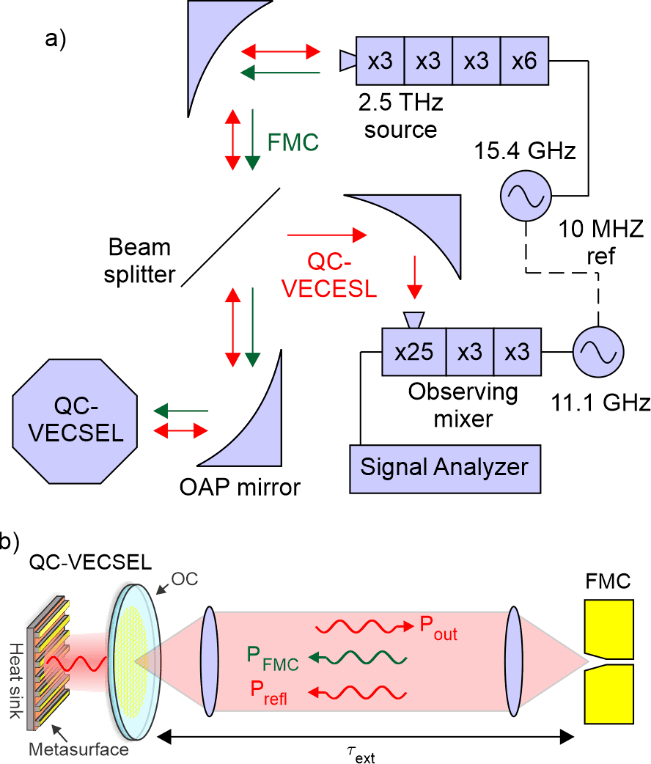
Perhaps the dominant source for single-frequency THz radiation below 1 THz is the Schottky diode frequency multiplier chain (FMC), in which the nonlinearity of a Schottky diode current-voltage relation is used to generate THz harmonics originating from microwave frequency references. Such sources are widely used as local oscillators in heterodyne receivers for applications in astrophysical/space science, high-resolution CW spectroscopy systems, FMCW radar systems for imaging and security screening, and THz communications. However, the efficiency of this generation process degrades with increasing frequency, so that above 2 THz only microwatt-level powers are available from state of the art FMCs. Happily, this is exactly where THz QC-lasers become competitive, which readily generate milliwatt or even tens of milliwatts of CW power. However, the frequency purity in the output from QC-lasers is imperfect due to fast fluctuations in the cavity, temperature, and electrical bias as well as long term drifts. As a result the free-running linewidths are often in the MHz or tens of MHz level. Thus, special effort is required to stabilize the output – usually by mixing the output with a THz frequency reference, and stabilizing the downconverted beatnote using a phase-locked loop.
A UCLA-JPL collaborative team has demonstrated an alternate approach: directly injection locking a THz QC-VECSEL (which provides milliwatt output power) using a Schottky diode FMC at 2.5 THz (using only microwatt-level power). The phase characteristics of the FMC are transferred onto the laser output, and the tens of MHz free-running laser linewidth is stabilized down to a Hz-level linewidth (relative to the synthesized source). This approach is a simpler alternative to phase-locking, as it requires no stabilization electronics or downconversion chain. The QC-laser effectively acts as a power amplifier for the stable electronic source, which can help to extend the power and high-frequency range of the multiplier chains. With the ever-improving power, bandwidth, frequency coverage, and commercial availability of THz FMCs, as well as the improving power, temperature, and tunability of THz QCLs, we envision the possibility of hybrid electronic-photonic systems for coverage of frequencies from 2-6 THz for high precision spectroscopy applications.
Christopher A. Curwen, Jonathan H. Kawamura, Darren J. Hayton, Sadhvikas J. Addamane, John L. Reno, Benjamin S. Williams, and Boris S. Karasik, “Optical injection locking of a THz quantum-cascade VECSEL with an electronic source,” Optics Letters, June 12, 2023. https://doi.org/10.1364/OL.492182
